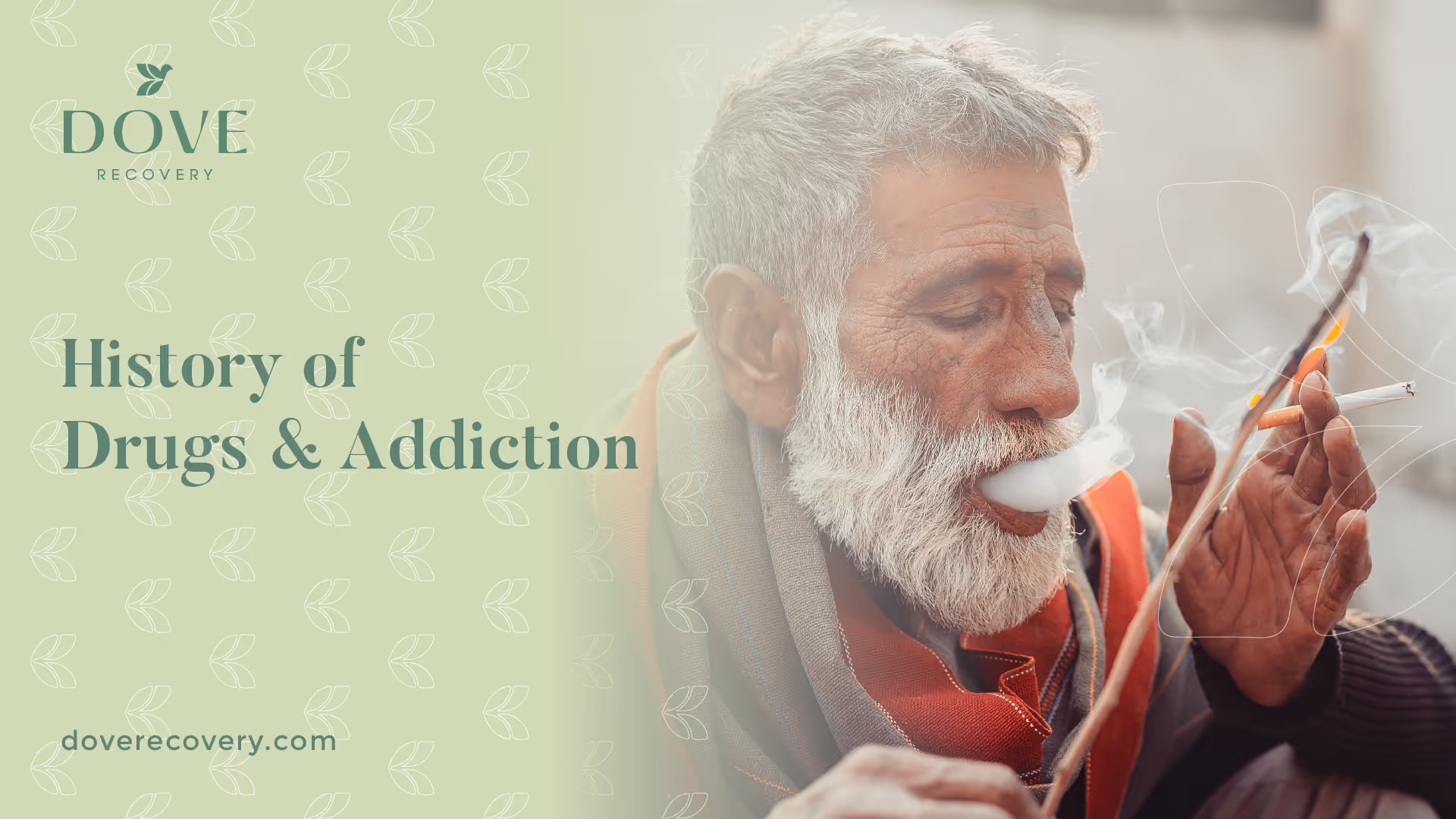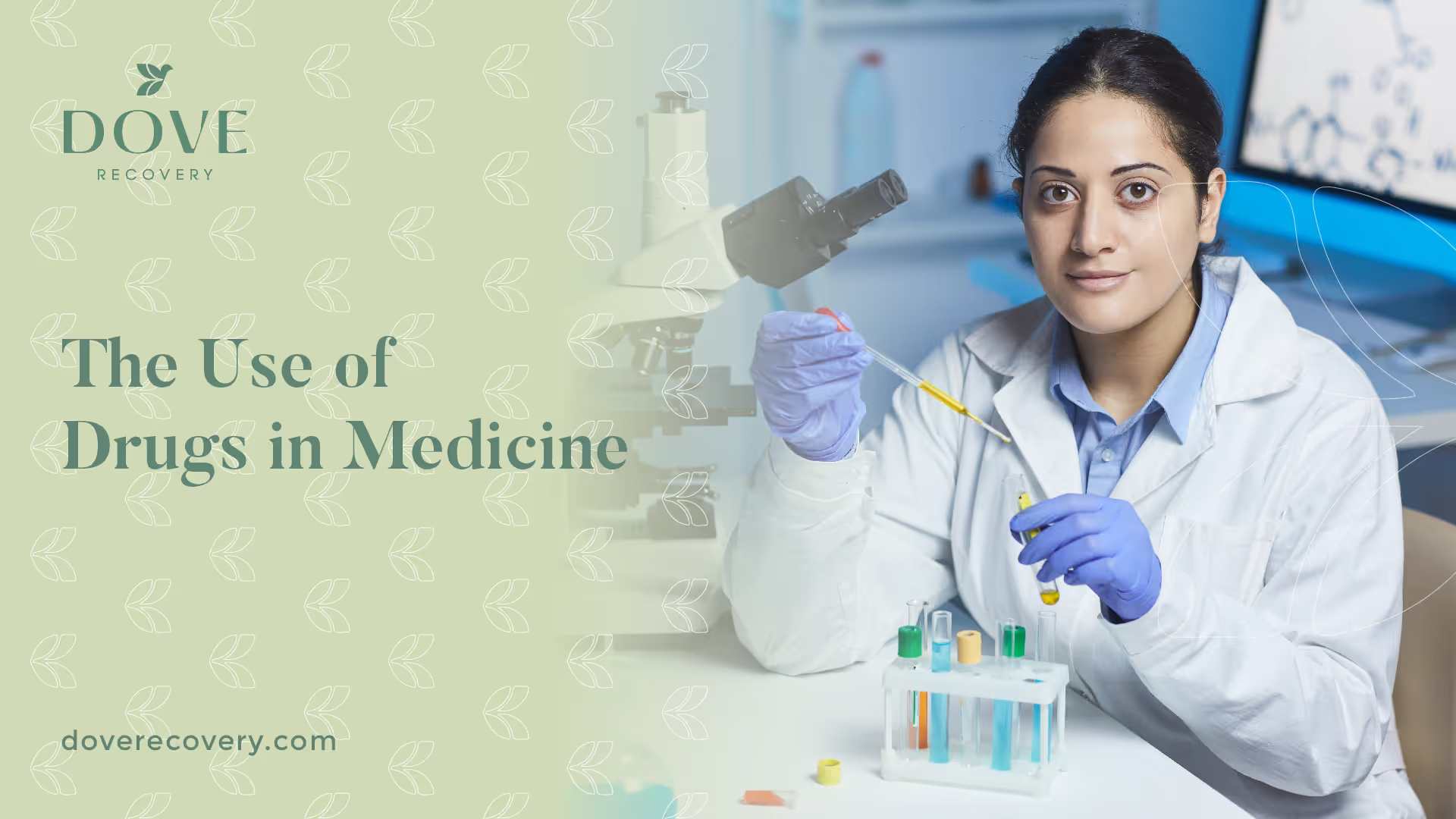History of Drugs & Addiction

History Of Drugs & Addiction

The history of drugs is a long and complex one that dates back thousands of years. Humans have been experimenting with drugs in various forms for centuries, and the effects of these substances have been both positive and negative. In this article, we'll explore the fascinating history of drugs and their impact on society.
Early Use of Drugs
The use of drugs can be traced back to ancient civilizations such as the Greeks, Egyptians, and Romans. These societies recognized the medicinal properties of certain substances and utilized them for a variety of purposes. For instance, the Greeks consumed opium as a pain reliever, particularly in surgical procedures. Opium was also used to induce sleep and alleviate anxiety. The Egyptians, on the other hand, used cannabis to treat various ailments such as glaucoma, inflammation, and even hemorrhoids.
The use of psychoactive plants and herbs in religious ceremonies was a common practice in many ancient cultures. Here are some examples:
- In ancient Greece, the Eleusinian Mysteries were religious rites that involved the consumption of a potion made from a combination of psychoactive plants, such as ergot and psilocybin-containing mushrooms. The potion induced altered states of consciousness that were believed to provide spiritual enlightenment and a connection with the divine.
- The ancient Aztecs used peyote, a cactus that contains mescaline, in their religious ceremonies. The visions induced by peyote were believed to allow communication with the gods and spirits.
- In Hinduism, the use of cannabis is mentioned in ancient texts such as the Vedas and is still used by some sects today. Cannabis is considered a sacred plant that can help induce a state of meditation and connection with the divine.
- The ancient Chinese used a variety of herbs, such as ginseng and ma-huang, for their medicinal and spiritual properties. These herbs were believed to promote longevity, vitality, and spiritual clarity.
- Native American tribes across North America used various psychoactive plants and herbs in their religious practices. For example, the Kiowa tribe used peyote, while the Ojibwe used tobacco and sweetgrass in their ceremonies.
Overall, the use of psychoactive plants and herbs in religious ceremonies has been a widespread practice throughout human history. While modern society often views drug use as taboo or harmful, these substances have played an important role in shaping cultural and spiritual practices across various civilizations.
Opium and Morphine
In the 19th century, opium became a popular drug among the working class in Europe and the United States. It was used to relieve pain and to help people sleep. However, it was soon discovered that opium was highly addictive and could have severe side effects.
Morphine, a derivative of opium, was first isolated in 1804. It was used as a pain reliever during the Civil War, and it quickly became a popular drug. However, it too was highly addictive and had severe side effects.
Cocaine
Cocaine was first isolated in 1859, and it quickly became a popular drug in Europe and the United States. It was used as a pain reliever and as a stimulant. However, it was soon discovered that cocaine was highly addictive and had severe side effects.
In the early 1900s, cocaine was banned in the United States, and its use declined. However, it remained popular in other parts of the world, and it is still used today.
Marijuana
Marijuana has been used for medicinal and recreational purposes for centuries. It was first introduced to the United States in the early 1900s, and it quickly became a popular drug. However, in the 1930s, marijuana was banned in the United States, and its use declined.
In recent years, marijuana has become legal in some parts of the United States and other countries. It is used for medicinal purposes and for recreational use.
Heroin
Heroin was first synthesized in 1874, and it was marketed as a non-addictive substitute for morphine. However, it was soon discovered that heroin was highly addictive and had severe side effects.
Heroin became a popular drug in the 20th century, and its use peaked in the 1960s and 1970s. However, in the 1980s, heroin use declined due to increased law enforcement efforts and the introduction of methadone treatment programs.
The Role of Drugs in Cultural and Religious Practices

Drugs have played a significant role in the spiritual and cultural practices of many societies throughout history. From psychoactive plants, such as peyote and ayahuasca, to herbs like cannabis and opium, these substances have been used for their perceived ability to induce altered states of consciousness and facilitate connections with the divine.
In some cultures, the use of drugs is considered sacred and is an integral part of religious or spiritual rituals. These substances are believed to have transformative properties that can facilitate communication with higher powers, induce visions, and provide insights into the nature of reality. Here are some examples of drugs that are used for religious or spiritual purposes:
- Ayahuasca is a plant-based brew that has been used by indigenous tribes in the Amazon Basin for centuries in shamanic ceremonies. Ayahuasca contains DMT (dimethyltryptamine), a powerful hallucinogenic compound that induces intense visions. It is believed that these visions provide access to spiritual realms and facilitate communication with spirits. Ayahuasca is considered a sacrament by many indigenous communities and is used for healing, divination, and spiritual growth.
- Peyote is a cactus that contains mescaline, a psychoactive compound that has been used by Native American tribes for thousands of years in religious ceremonies. Peyote is considered a sacrament and is used for prayer, meditation, and healing. It is believed that peyote can connect individuals with the divine and provide insights into the nature of existence.
- Cannabis has been used for religious purposes in various cultures throughout history. In Hinduism, cannabis has been used as a sacrament in the worship of Shiva, one of the principal deities of the religion. In Rastafarianism, cannabis is considered a sacrament that facilitates communication with Jah (God) and promotes spiritual growth.
Overall, the use of drugs in religious or spiritual contexts is deeply ingrained in many cultures throughout the world. While these substances can have profound effects on individuals' spiritual experiences and beliefs, it's important to approach them with respect and caution to prevent negative consequences.
Similarly, in Hinduism, the use of bhang (a drink made from cannabis) is associated with Lord Shiva, one of the principal deities in Hinduism. Bhang is consumed during the festival of Holi as part of a ritual that celebrates Shiva's relationship with cannabis.
In many Native American tribes, peyote has been used for centuries in religious ceremonies. Peyote contains mescaline, a psychoactive compound that produces vivid hallucinations. The use of peyote is considered essential to maintain contact with the spirit world and connect with one's ancestors.
Overall, drugs have played an important role in shaping cultural and spiritual practices across various civilizations. While modern society often views drug use as taboo or harmful, it is important to recognize that these substances have deep cultural significance for many communities around the world.
Types of Drugs and Their Effects
Drugs can be classified into several categories based on their chemical structure, effects on the body, and legal status. Here are some of the most common types of drugs and their effects:
Stimulants
Stimulants are a class of drugs that increase alertness, attention, and energy. They work by increasing the levels of dopamine and norepinephrine in the brain. Examples of stimulants include caffeine, nicotine, amphetamines, and cocaine.
The effects of stimulants can vary depending on the dosage and mode of administration. In low doses, they can improve cognitive performance, enhance mood, and reduce fatigue. However, in high doses or with prolonged use, they can cause anxiety, paranoia, insomnia, heart palpitations, seizures, and addiction.
Depressants
Depressants are a class of drugs that slow down brain activity and produce a calming effect. They work by enhancing the effects of gamma-aminobutyric acid (GABA), an inhibitory neurotransmitter in the brain. Examples of depressants include alcohol, benzodiazepines (e.g., Valium), barbiturates (e.g., Phenobarbital), and opioids (e.g., heroin).
The effects of depressants can range from mild relaxation to profound sedation or anesthesia. They can also impair judgment, coordination, memory, and respiration. Overdose or mixing different depressant drugs can lead to respiratory depression or even death.
Hallucinogens
Hallucinogens are a class of drugs that alter perception, thought processes, and emotions. They work by binding to serotonin receptors in the brain. Examples of hallucinogens include LSD (lysergic acid diethylamide), psilocybin mushrooms ("magic mushrooms"), mescaline (peyote cactus), DMT (ayahuasca), and ketamine.
The effects of hallucinogens can be unpredictable and highly subjective. They can range from intense sensory experiences, such as visual distortions, synesthesia, and ego dissolution, to profound insights or spiritual experiences. However, they can also cause anxiety, paranoia, confusion, and flashbacks.
Cannabis
Cannabis is a plant-based drug that contains various psychoactive compounds, including THC (tetrahydrocannabinol) and CBD (cannabidiol). It works by binding to cannabinoid receptors in the brain. Cannabis can be consumed in various forms, such as smoking, vaping, edibles, or topicals.
The effects of cannabis can vary depending on the strain, dosage, and mode of consumption. They can include euphoria, relaxation, altered perception of time and space, increased appetite, dry mouth and eyes, and impaired short-term memory. Long-term use or high doses of cannabis can also lead to addiction or negative health outcomes.
Overall, drugs can have a wide range of effects on the body and mind. Understanding their mechanisms of action and potential risks is crucial for making informed decisions about drug use.
The Use of Drugs in Medicine

Drugs have played a crucial role in modern medicine, and their use has revolutionized the treatment of many diseases and conditions. From antibiotics to chemotherapy to painkillers, drugs have saved countless lives and improved the quality of life for millions of people.
One of the primary advantages of drugs in medicine is their ability to selectively target specific biological processes or pathogens. This targeted approach allows for more effective treatments with fewer side effects. Here are some examples of drugs that demonstrate this specificity:
- Antibiotics are drugs that are used to treat bacterial infections. They work by targeting specific components of bacterial cells, such as the cell wall or protein synthesis machinery, while leaving human cells unharmed. This allows antibiotics to kill bacteria without harming healthy cells in the body.
- Chemotherapy drugs are used to treat cancer by targeting rapidly dividing cells, which includes cancer cells. These drugs can be designed to specifically target cancer cells while sparing healthy cells, reducing the risk of side effects such as hair loss and nausea.
- Immunotherapy drugs are a type of cancer treatment that harnesses the power of the immune system to fight cancer. These drugs work by targeting specific proteins on cancer cells or immune cells to enhance the body's natural ability to recognize and attack cancer cells.
- Antiviral drugs are used to treat viral infections by targeting specific viral enzymes or proteins that are essential for viral replication. By inhibiting these processes, antiviral drugs can effectively stop the virus from reproducing without harming human cells.
Overall, the targeted approach of drugs in medicine has revolutionized the field of healthcare and has allowed for more effective treatments with fewer side effects.
However, like all drugs, those used in medicine also come with risks. Adverse reactions to drugs are a common cause of hospitalization and death, and some drugs can cause serious long-term health problems. Additionally, overuse or misuse of certain drugs can lead to antibiotic resistance or addiction.
Despite these risks, the benefits of using drugs in medicine far outweigh the potential harms. With proper regulation and oversight, drug therapies can continue to improve and save lives for years to come.
FAQs
What are some signs of drug addiction?
Drug addiction can manifest in various ways, but some common signs include:
- Loss of interest in activities that were once enjoyable
- Neglecting responsibilities at home, work, or school
- Changes in appearance or hygiene
- Mood swings or irritability
- Financial problems or borrowing money frequently
- Secretive behavior or lying about drug use
If you or someone you know is struggling with drug addiction, it's important to seek professional help as soon as possible.
Can drugs be used safely?
Many drugs can be used safely when taken as prescribed by a healthcare provider. However, all drugs come with risks and potential side effects, and some drugs are more dangerous than others. It's important to follow dosage instructions carefully and to talk to your doctor if you experience any concerning symptoms.
Additionally, some drugs can interact with each other or with certain medical conditions. Always disclose your full medical history and current medications to your healthcare provider before starting a new drug therapy.
How can I help someone who is struggling with addiction?
If someone you know is struggling with addiction, there are several steps you can take to offer support:
- Encourage them to seek professional help from a healthcare provider or addiction specialist.
- Avoid judgmental language or blaming the individual for their situation.
- Offer emotional support and listen without interrupting.
- Help them identify triggers that may lead to drug use and develop strategies for avoiding these triggers.
- Consider attending family therapy sessions together to work through any underlying issues that may contribute to addiction.
Remember that recovery from addiction is a long-term process that requires ongoing support and commitment.
Conclusion
The history of drugs is a fascinating one that spans thousands of years. Humans have been experimenting with drugs for centuries, and the effects of these substances have been both positive and negative. While some drugs have been used for medicinal purposes, others have been highly addictive and have had severe side effects.
It's important to remember that drugs can be dangerous and should only be used under the guidance of a medical professional. If you or someone you know is struggling with drug addiction, there are resources available to help.
Sources:
- "A Brief History of Opium" by Jim Hogshire, High Times Magazine, 1993
- "The History of Cocaine" by David T. Courtwright, National Institute on Drug Abuse, 2001
- "The History of Heroin" by Eric C. Schneider, The New York Times, 2016
- "Marijuana: A Short History" by John Hudak, Brookings Institution, 2016
